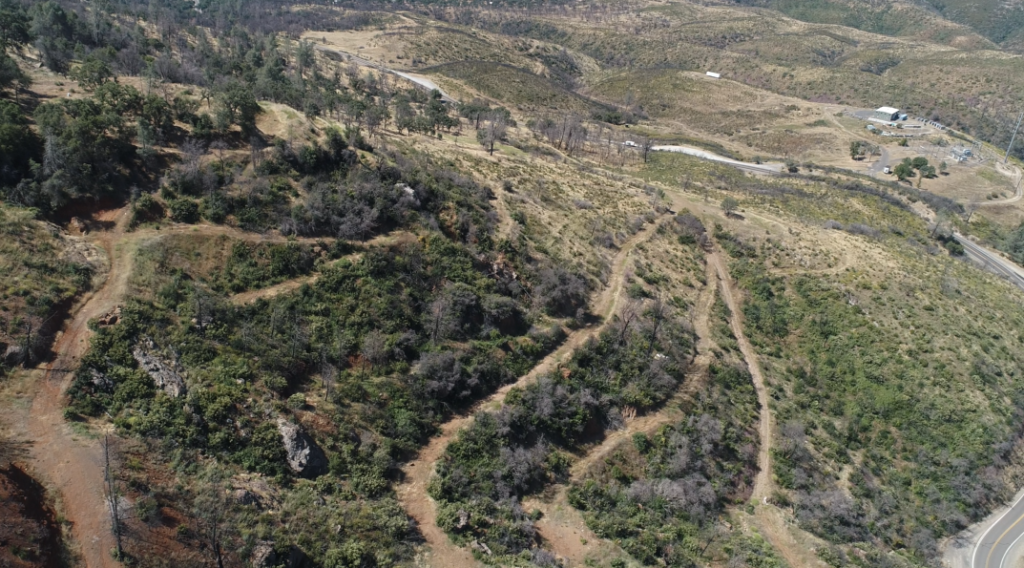
In the last six months, Lode Gold Resources (TSXV: LOD; US-OTC: SBMIF) has created a subsidiary to spin out its Yukon and New Brunswick assets into a new company to be called Gold Orogen; struck an alliance to create one of the largest land packages in the Atlantic province; and raised $6 million in a challenging market.
Once listed later this year, Gold Orogen will have funds to spend on exploration at its WIN and Golden Culvert projects in the Yukon’s Tombstone belt and at its New Brunswick district play. Lode Gold shareholders will receive new shares in a pure play explorer and continue to have upside with Lode’s past-producing Fremont gold project in California, it says.
“Raising that much money wasn’t easy in this market and we still need to raise another $1.5 million because we want to make sure the Spin co has enough money for systematic exploration so we can better define our drill targets,” CEO Wendy Chan said in an interview.
Lode Gold has already racked up some early exploration wins. Last year it discovered a reduced intrusion-related gold system (RIRGS) at WIN, which complements the already promising sediment-hosted orogenic system at Golden Culvert, 11 km to the north.
The WIN and Golden Culvert projects are to the east and south of Seabridge Gold’s (TSX: SEA; NYSE: SA) 3 Aces camp, and at the southern end of the Tombstone gold belt that hosts world-class gold deposits such as Snowline Gold’s (TSXV: SGD; US-OTC: SNWGF) Rogue project and Hecla’s (NYSE: HCL) Keno Hill.
“Snowline’s discovery of the Valley target at its Rogue project, 200 km from WIN and Golden Culvert, suggests we’re playing in underexplored elephant country,” Chan says. “Geologist Quinton Hennigh of Crescat Capital, who is an investor in Snowline, said at the Beaver Creek Precious Metals Summit two years ago that Snowline’s discovery of Valley emphasizes that we are operating in a region with significant unexplored potential, making these systems highly attractive exploration targets on a district scale.’”
In June, the company commissioned a QMAG(T) geophysical survey of WIN and Golden Culvert as part of a collaborative alliance with Snowline, Seabridge and other Yukon explorers. The system is good at lighting up structure and will help the company understand the orogenic gold mineralization at both properties. The survey also confirmed RIRGS mineralization at WIN with mapped hornfels and intrusions.
“It’s a very high-resolution magnetic survey that we would not have been able to afford if we hadn’t partnered with Seabridge and Snowline,” says Chan. “We saved about $100,000 for our shareholders.”
Lode Gold hopes to pick targets and start a 1,200-metre drill program over the next 12 months. Last year the company found sheeted gold-bearing quartz veins in hornfels-altered outcrop at WIN that returned rock-chip samples of up to 8.53 grams gold per tonne and 155 grams silver.
The vein systems on both properties are controlled by the same regional structures trending northwest. Drilling on portions of the 24-km strike at Golden Culvert returned 12.53 grams gold over 33.1 metres including 60.1 grams gold over 0.9 metre.
In Atlantic Canada, Lode Gold and Fancamp Exploration (TSXV: FNC) inked a $3.5-million strategic alliance in August. Fancamp agreed to transfer its stake in the 309-sq.-km Riley Brook project in New Brunswick into a 50/50 joint-venture with Gold Orogen, becoming a 19.9% shareholder in Gold Orogen and getting about a 3% stake in Lode Gold.
“Fancamp comes with capital and technical expertise,” Chan says. “By combining our Yukon and New Brunswick assets with this group, we create shareholder value and optionality.”
Riley Brook is about 25 km south of Lode Gold’s 111-sq.-km McIntrye Brook project and 80 km west of Bathurst. McIntrye Brook is adjacent to Puma Exploration’s (TSXV: PUMA; US-OTC: PUMXF) Williams Brook project and shares the same geological setting as its Lynx deposit.
At McIntyre Brook, Lode Gold has only drilled two holes and both hit gold mineralization, with one returning 20 gram-metres. The projects are hosted by Ordovician aged rocks in the same tectonic setting that formed New Found Gold’s (TSXV: NFG; NYSE-A: NFGC) Queensway project and Calibre Mining’s (TSX: CBX; US-OTC: CBXMF) Valentine gold project, Lode Gold says.
Once Lode Gold spins out Gold Orogen it will pivot to its Fremont orogenic gold deposit in California, where it sees potential for an underground mine. Fremont sits on private land about 500 km north of Equinox Gold’s (TSX: EQX; NYSE-A: EQX) Castle Mountain and Mesquite mines and was mined at 8 grams gold from just two of six deposits before it was closed due to a ban on gold mining during the Second World War. Just 16% of the upper 500 metres has been explored and three step-out drillholes have confirmed mineralization extends 1,200 metres down plunge.
Fremont came with 23 km of underground workings and contains 1 million indicated oz. gold in 19 million tonnes grading 1.9 grams gold and another 2 million inferred oz. in 28.3 million tonnes averaging 2.22 grams gold. At US$2,000 per oz. gold, a 2023 preliminary economic assessment outlined an after-tax net present value of US$370 million (5% discount rate) and 31% internal rate of return. A 4,500-metre drill program is planned for 2025.
The preceding Joint Venture Article is PROMOTED CONTENT sponsored by Lode Gold and produced in co-operation with The Northern Miner. Visit: www.lode-gold.com for more information.
Comments